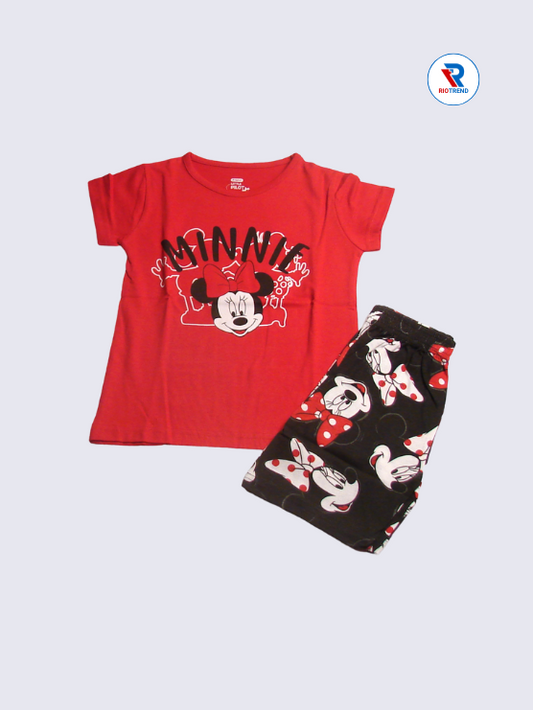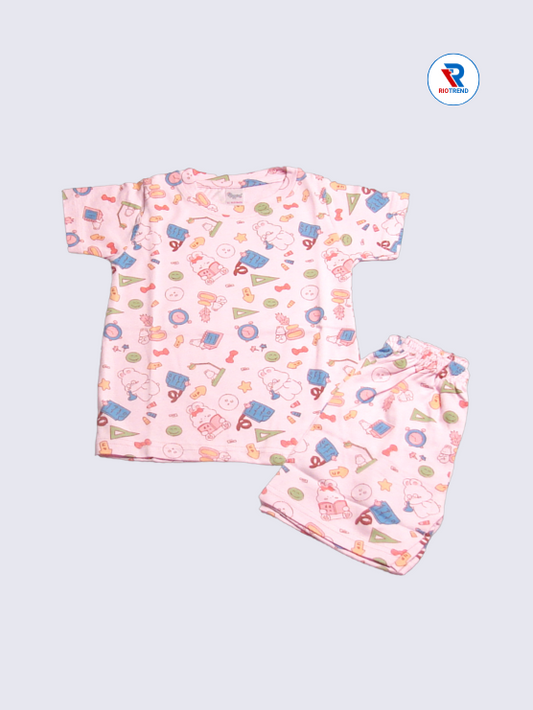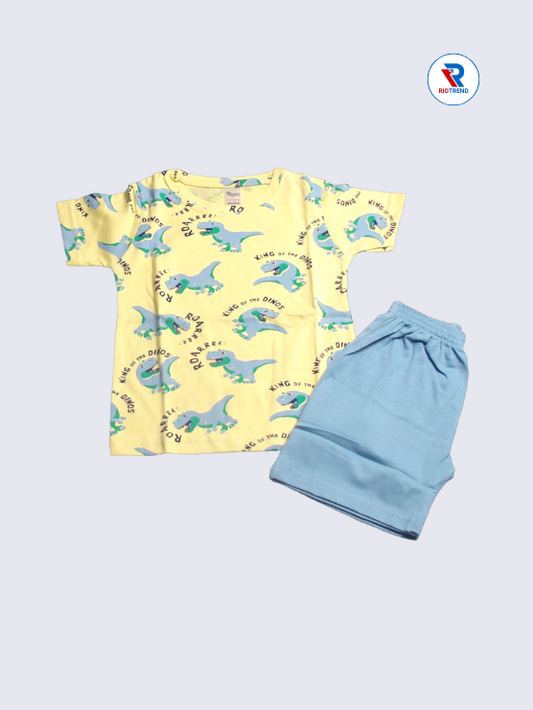Have you ever wondered how your favorite online grocery store can deliver fresh vegetables, dairy products, and household essentials to your doorstep in just 10-30 minutes? Or how ecommerce platforms manage to fulfill orders with such incredible speed and accuracy, often faster than you could shop for the same items in a physical store? The answer lies in a revolutionary retail concept that's quietly transforming Indian commerce: dark stores.
Dark stores represent one of the most significant innovations in modern retail, yet most consumers have never heard the term or understood how these facilities directly impact their shopping experience. These aren't mysterious or secretive locations – they're highly optimized fulfillment centers designed exclusively for online orders, operating behind the scenes to make your lightning-fast deliveries possible.
In India's rapidly growing ecommerce market, dark store operations have become the backbone of quick commerce, enabling everything from 10-minute grocery delivery in metropolitan areas to same-day fulfillment of electronics and household goods. These facilities are strategically located throughout urban areas, often in industrial zones or converted retail spaces, working 24/7 to ensure your orders are picked, packed, and dispatched with unprecedented speed.
Understanding how dark stores work not only satisfies curiosity about modern retail logistics but also helps you make smarter shopping decisions, optimize your ordering patterns, and appreciate the complex operations that make convenient online shopping possible. This comprehensive guide will demystify dark stores, explain their role in fast delivery, and show you how this technology directly benefits your daily shopping experience.
What Are Dark Stores and How Do They Work
Dark stores are retail fulfillment centers designed exclusively for online order processing, with no customer-facing retail space or walk-in shopping capabilities. Unlike traditional stores where customers browse aisles and make purchases in person, dark stores are optimized purely for efficiency, speed, and accuracy in fulfilling digital orders.
The term "dark" doesn't refer to lighting conditions but rather to the fact that these stores are "dark" to consumers – invisible and inaccessible to regular shoppers. Think of them as highly specialized warehouses that combine the product variety of retail stores with the operational efficiency of distribution centers, but on a much smaller, more agile scale.
Dark store fulfillment operates through sophisticated inventory management systems that track every product in real-time. When you place an online order, it's immediately transmitted to the nearest dark store serving your area. Advanced algorithms determine the optimal picking route through the facility, and trained staff members – often called "pickers" – collect your items following precise sequences that minimize walking time and maximize efficiency.
The layout of micro-fulfillment centers (another term for dark stores) is completely different from traditional retail stores. Instead of attractive displays and customer-friendly layouts, dark stores prioritize functionality. Products are organized based on picking frequency, weight, size, and storage requirements. Fast-moving items are placed in easily accessible locations, while temperature-sensitive products have dedicated climate-controlled zones.
Technology integration is crucial to dark store operations. Inventory management systems automatically track stock levels, predict demand patterns, and trigger reorders before products run out. Pick-and-pack systems guide workers through optimized routes using handheld devices or wearable technology. Quality control systems ensure accuracy, while integration with delivery logistics platforms coordinates the handoff to last-mile delivery partners.
The automation in dark stores varies by operation size and investment level. Some facilities use automated storage and retrieval systems, robotic picking assistance, or conveyor belt systems to further increase efficiency. However, many dark stores still rely primarily on human workers supported by technology, as this approach offers flexibility for handling diverse product types and sudden demand changes.
The Technology Behind Rapid Order Fulfillment
Modern dark store technology represents a convergence of multiple technological innovations working together to achieve unprecedented fulfillment speed and accuracy.
Inventory management systems form the foundation of dark store operations, using real-time data to track every item's location, quantity, expiration date, and movement patterns. These systems integrate with supplier databases to automatically reorder products based on predictive algorithms that consider historical sales data, seasonal trends, local events, and even weather patterns that might affect demand.
Order routing algorithms instantly analyze incoming orders and make complex decisions about optimal fulfillment strategies. When you place an order, the system considers factors like product availability, picker workload, delivery route efficiency, and customer priority levels to determine which dark store should fulfill your order and when it should be processed.
Pick path optimization uses advanced algorithms to determine the most efficient route through the dark store for each order. Rather than following store layout logic, these systems consider factors like product weight (collecting heavy items last), temperature requirements (frozen items picked last before packing), and fragility (delicate items protected during the picking process).
Real-time inventory tracking employs technologies like RFID tags, barcode scanning, and sometimes computer vision to maintain accurate product counts. This technology prevents the disappointing experience of ordering items that are actually out of stock, while also enabling automatic substitution suggestions when preferred products aren't available.
Integration with delivery networks ensures seamless handoff from fulfillment to last-mile delivery. The systems coordinate with delivery partners to optimize route planning, estimate accurate delivery times, and provide real-time tracking information that you receive through shopping apps or SMS updates.
Quality control systems use technology to minimize errors in order fulfillment. This might include weight verification (ensuring the packed order weight matches expected weight based on selected items), image recognition for product verification, and systematic checking processes that flag unusual orders for manual review.
Types of Dark Store Models in India
The Indian market has developed several distinct dark store formats tailored to different product categories, delivery speeds, and market densities.
Grocery-Focused Dark Stores
Quick commerce dark stores specializing in groceries and daily essentials are designed for ultra-fast delivery, typically promising 10-30 minute delivery windows. These facilities stock 2,000-5,000 SKUs covering fresh produce, dairy, packaged foods, personal care items, and household necessities.
These stores are typically located within 2-3 kilometers of their service areas to enable rapid delivery. They maintain sophisticated cold chain infrastructure for fresh and frozen products, with separate zones for different temperature requirements. The product selection focuses on high-frequency purchases rather than comprehensive variety, using data analytics to stock items with highest local demand.
Multi-Category Dark Stores
Hybrid fulfillment centers handle diverse product categories including electronics, fashion, home goods, and groceries from a single location. These facilities are larger than grocery-focused dark stores and serve wider geographic areas, typically offering same-day or next-day delivery rather than ultra-fast delivery.
The complexity of managing multiple product categories requires sophisticated inventory management and specialized storage solutions. Electronics need security measures and anti-static environments, fashion items require organized sizing and seasonal rotation, while groceries need temperature control and expiration date management.
Specialized Dark Stores
Some specialized dark stores focus on specific categories like pharmaceuticals, electronics, or fashion. These facilities can optimize their operations, staffing, and infrastructure for the specific requirements of their product categories. Pharmacy dark stores, for example, maintain strict temperature controls and regulatory compliance, while electronics dark stores emphasize security and technical product knowledge among staff.
Benefits of Dark Store Operations for Consumers
Understanding dark store advantages helps consumers appreciate how this model directly improves their shopping experience while often reducing costs.
Faster delivery times represent the most obvious benefit, but the speed advantages extend beyond just quick delivery. Dark stores enable more accurate delivery time predictions because their operations are specifically designed for fulfillment efficiency. When you're told your order will arrive in 25 minutes, sophisticated systems have calculated this estimate based on current order volume, picker availability, and delivery logistics.
Improved product availability results from dark stores' focus on inventory management and demand prediction. Because these facilities stock products based on local demand patterns and maintain real-time inventory tracking, they often have better availability of popular items compared to traditional stores that might face stock-outs during busy periods.
Enhanced order accuracy comes from systematic picking processes, technology-assisted verification, and staff who specialize in order fulfillment rather than dividing attention between customers and inventory management. The controlled environment of dark stores reduces the errors that can occur in busy retail environments.
Cost savings for consumers often result from dark stores' operational efficiency. Lower real estate costs (industrial locations vs. prime retail spaces), reduced staffing requirements, and optimized logistics can translate to competitive pricing and lower delivery fees. Many dark store operations can offer free delivery on smaller order sizes than traditional ecommerce because their fulfillment costs are lower.
Consistent quality in fresh products becomes possible through specialized storage and handling procedures. Dark stores can maintain optimal storage conditions for perishables without worrying about customer handling, retail display requirements, or the temperature fluctuations that occur in customer-accessible stores.
Expanded product selection in local areas becomes feasible through dark stores' ability to stock products based on micro-local demand patterns. Items that might not justify shelf space in traditional stores can be stocked in dark stores serving areas with specific demand for those products.
How Dark Stores Enable Ultra-Fast Delivery
The mechanics of rapid order processing in dark stores involve multiple coordinated systems working together to minimize the time between order placement and delivery dispatch.
Order receipt and processing happens in seconds through automated systems that instantly validate payment, check inventory availability, and route orders to appropriate fulfillment teams. Unlike traditional ecommerce warehouses that might batch orders for processing, dark stores handle orders individually with minimal delay between receipt and fulfillment start.
Optimized picking processes use pre-calculated routes and organized storage to enable picking speeds of 100-200 items per hour per picker. Products are organized not alphabetically or by category, but by picking frequency and optimal collection sequences. Fast-moving items are placed in easily accessible locations, while picking routes are designed to minimize backtracking and walking distance.
Streamlined packing operations use standardized processes and pre-positioned packaging materials to reduce packing time to 1-2 minutes per order. Packing stations are strategically located to minimize the distance between picking completion and dispatch, with packaging materials selected for each order type during the picking process.
Immediate dispatch coordination connects completed orders directly with available delivery personnel without the delays typical in traditional logistics operations. Delivery partners are often stationed at or near dark stores during peak hours, enabling immediate pickup of completed orders.
Route optimization for last-mile delivery considers real-time traffic conditions, delivery personnel location, and other pending deliveries to minimize total delivery time. Advanced routing algorithms can coordinate multiple deliveries to optimize delivery efficiency while maintaining promised delivery windows.
Real-time tracking integration provides customers with accurate delivery updates by connecting dark store fulfillment systems directly with delivery tracking platforms. This integration enables the precise timing updates that allow customers to track their orders from fulfillment through delivery.
The Economics Behind Dark Store Efficiency
Understanding dark store economics reveals how these operations can offer fast delivery and competitive pricing simultaneously.
Reduced real estate costs enable dark stores to operate in industrial areas or converted retail spaces that cost significantly less than prime retail locations. In major Indian cities, industrial space might cost ₹50-100 per square foot compared to ₹200-500 per square foot for retail space in commercial areas. These savings can be reinvested in technology, staff, and customer benefits.
Labor efficiency in dark stores allows each worker to handle significantly more orders per hour than traditional retail employees. While a retail store employee might help 10-20 customers per hour while also managing inventory and store maintenance, a dark store picker can fulfill 15-25 orders per hour with higher accuracy rates.
Inventory optimization reduces waste and improves cash flow through better demand prediction and faster inventory turnover. Dark stores can maintain optimal inventory levels based on real-time demand data rather than estimating based on retail floor space constraints. This precision reduces overstocking costs and stockout losses.
Reduced shrinkage (inventory loss due to theft, damage, or spoilage) significantly improves profitability. Without customer access, dark stores experience virtually no theft, and controlled handling reduces product damage. For perishable goods, optimized storage and faster turnover reduce spoilage losses.
Technology leverage enables dark stores to achieve economies of scale more quickly than traditional retail operations. The same inventory management and fulfillment technology can efficiently manage operations regardless of order volume, making it economically viable to serve smaller geographic areas with specialized product selections.
Operational scalability allows dark stores to adjust capacity based on demand patterns without the constraints of retail store hours or customer access considerations. During peak demand periods, dark stores can extend operating hours, add temporary staff, or implement surge pricing more flexibly than customer-facing retail operations.
Practical Tips for Maximizing Dark Store Benefits
Smart consumers can optimize their shopping experience by understanding how dark store operations work and adjusting their ordering patterns accordingly.
Timing Your Orders Strategically
Peak hour optimization can improve your delivery experience by avoiding the busiest ordering periods when possible. Many dark stores experience peak demand during traditional meal times (12-2 PM, 7-9 PM) and weekend evenings. Ordering during off-peak hours often results in faster delivery times and better product availability.
Understanding restocking patterns helps ensure product availability. Many dark stores receive fresh inventory deliveries in early morning hours, making mornings optimal for ordering items that frequently sell out. Evening orders might face reduced selection in popular categories.
Order Size and Frequency Optimization
Batch ordering can be more efficient than multiple small orders, though this depends on the specific dark store operation. Some platforms offer free delivery above certain thresholds (often ₹200-500), making it economical to combine multiple small needs into single orders.
However, for ultra-fast delivery services, frequent small orders might actually be more efficient than trying to predict all your needs in advance. The convenience of 15-30 minute delivery makes it practical to order items as you need them rather than planning extensively.
Product Selection Strategies
Substitute flexibility improves your shopping experience when ordering from dark stores. Being open to brand substitutions or similar products increases the likelihood of complete order fulfillment and faster delivery, especially during high-demand periods.
Fresh product timing should consider the dark store's receiving and turnover patterns. Ordering fresh produce, dairy, or baked goods in the afternoon or evening often provides products with optimal freshness, as morning inventory has had time to turn over.
Final Thoughts
Dark stores represent a fundamental shift in retail operations, prioritizing efficiency and customer convenience over traditional retail concepts. These invisible yet crucial facilities enable the ultra-fast delivery times, competitive pricing, and reliable service that modern consumers increasingly expect from online shopping.
Understanding how dark stores work helps you appreciate the complex logistics behind your convenient shopping experiences while also enabling you to make smarter ordering decisions. From timing your orders to optimize delivery speed to understanding how inventory management affects product availability, knowledge of dark store operations can enhance your overall shopping experience.
As Indian ecommerce continues evolving, dark stores will likely become even more sophisticated, incorporating advanced automation, artificial intelligence, and predictive analytics to further improve speed and efficiency. The investments being made in dark store infrastructure today are laying the foundation for even more convenient and affordable online shopping experiences in the future.
The next time you receive a delivery in 20 minutes or find exactly what you need available for immediate delivery, remember the sophisticated dark store operations working behind the scenes to make that convenience possible. These facilities represent one of the most significant innovations in modern retail, quietly revolutionizing how we shop and receive products while continuously working to make the experience faster, more accurate, and more affordable for consumers across India.
Dark Stores FAQ's
Are products in dark stores more expensive than in regular stores?
Pricing in dark stores is typically competitive with or sometimes lower than traditional retail, though convenience fees or delivery charges may apply. The operational efficiency of dark stores often enables competitive pricing, and many platforms absorb delivery costs for orders above minimum thresholds (usually ₹200-500).
How do dark stores maintain product quality without customers checking items personally?
Dark stores often maintain higher quality standards than traditional retail because products aren't handled by customers, storage conditions are optimized, and faster inventory turnover reduces the time products spend in storage. Staff are trained in quality selection, and many operations have quality guarantee policies with easy returns or replacements.
What happens if items I ordered aren't available when my order is being fulfilled?
Most dark store operations have real-time inventory systems that prevent ordering unavailable items, but when stockouts occur, customers are typically notified immediately with options to substitute similar products, remove items from the order, or cancel the entire order. Many platforms offer automatic substitution with the option to refuse substitutes at delivery.
Are dark store jobs good employment opportunities?
Dark store operations create various employment opportunities including pickers, inventory managers, quality controllers, and supervisors. These jobs often offer structured work environments, opportunities for advancement, and skills training. Many positions offer flexible scheduling and performance-based incentives.
How do dark stores handle returns or exchanges?
Return policies for dark store purchases are typically similar to other ecommerce operations, with the advantage of faster processing due to proximity. Many operations offer instant refunds for eligible returns and can process exchanges within hours rather than days.
Will dark stores replace traditional grocery stores entirely?
Dark stores complement rather than replace traditional retail, serving different customer needs. While excellent for convenience and routine purchases, traditional stores remain important for browsing, comparing products physically, and social shopping experiences. The future likely includes both models serving different purposes.









